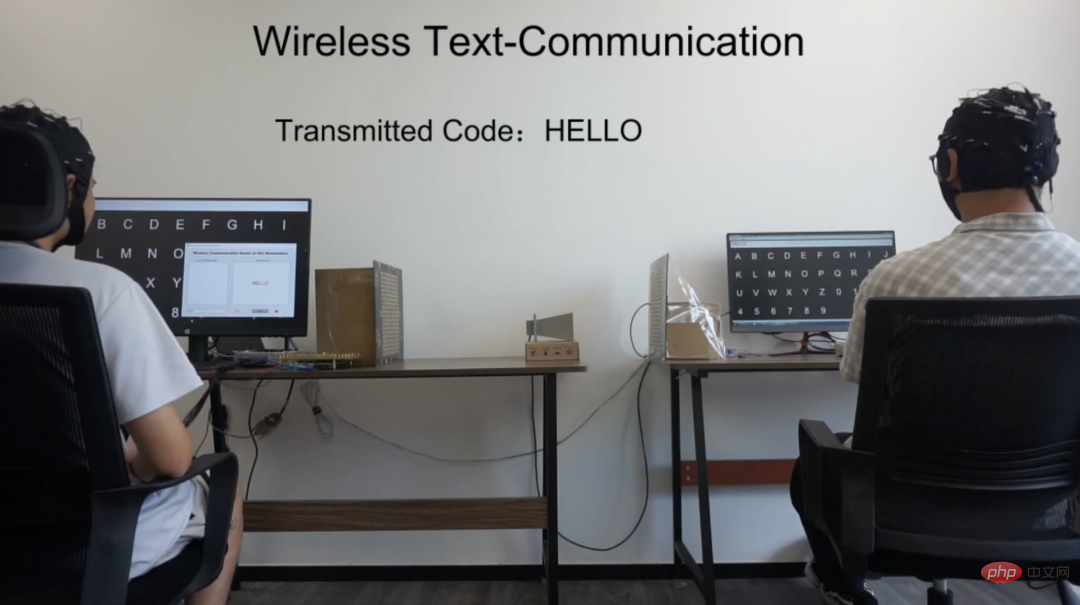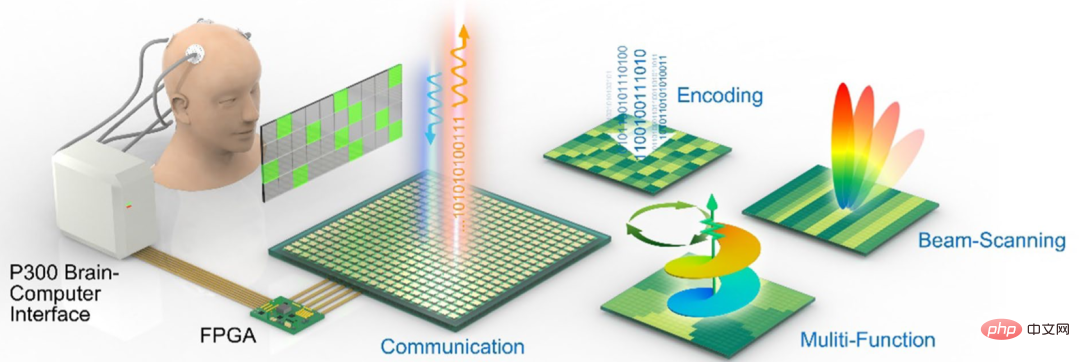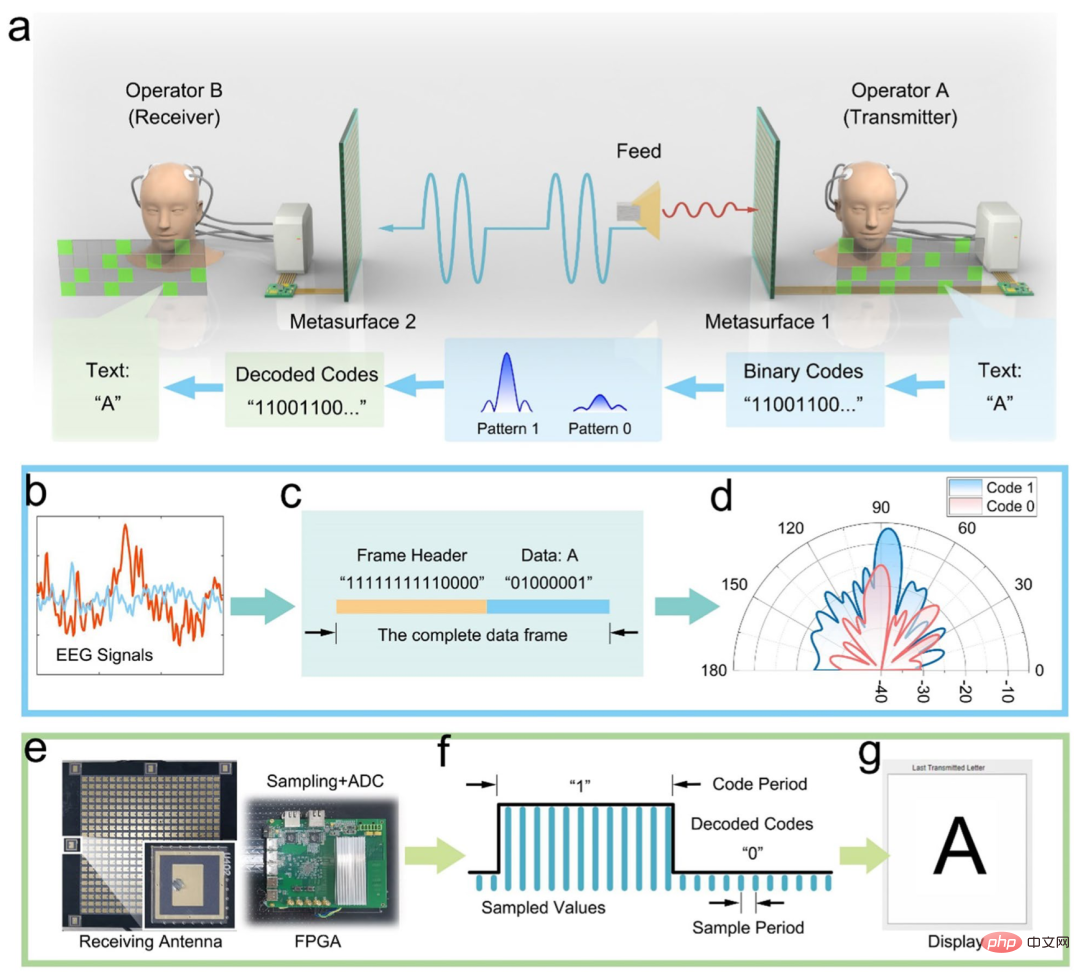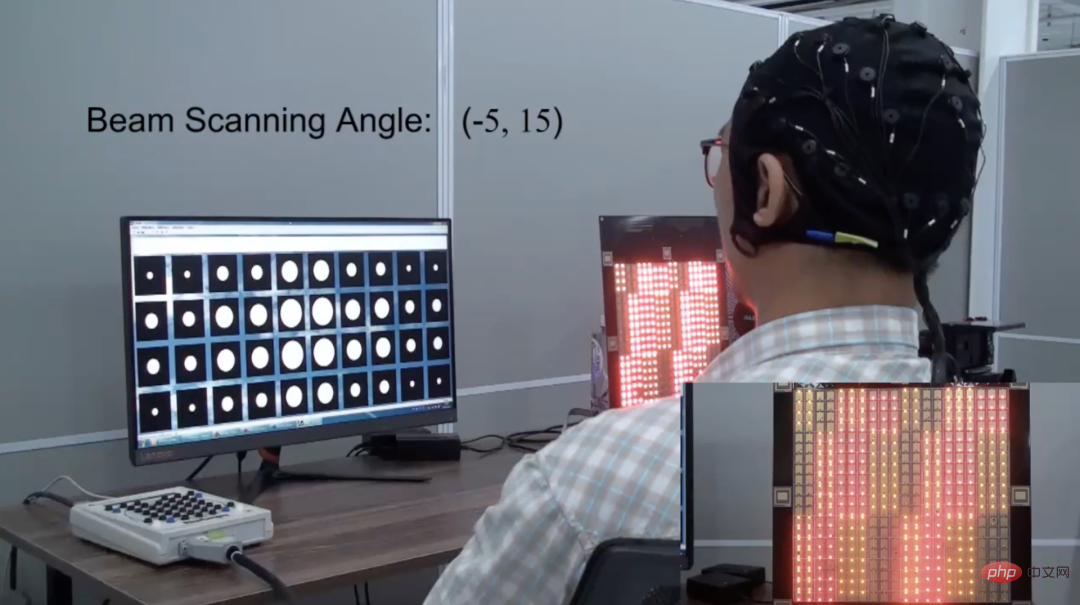Home > Article > Technology peripherals > Wireless 'soul communication'! Academician Cui Tiejun leads the development of new brain-computer supersurface, flexible and non-invasive

In recent years, coding metasurfaces have achieved real-time and programmable control of electromagnetic functions, while previous electromagnetic functions were either static , or are very limited in traditional passive devices. However, such metasurfaces still require manual operation.
In order to directly detect and distinguish people's wishes, scientists subsequently proposed the concept of brain-computer interface (BCI), trying to use brain-computer interface to Interfaces to establish communication between the brain and the device provide a new perspective on the control of programmable metasurfaces. By collecting brain signals from the "special hat," the brain-computer interface can decode the operator's wishes and send commands to the controlled object without requiring the operator to perform some complex muscle activities.
Now, the team of Academician Cui Tiejun of the State Key Laboratory of Millimeter Waves at Southeast University, together with scientific research institutions such as South China University of Technology and the National University of Singapore, have gone one step further and developed an electromagnetic brain-computer metasurface (electromagnetic brain-computer- metasurface, EBCM).
According to reports, this metasurface can flexibly and non-invasively control information synthesis and wireless transmission, converting the operator's brain information into electroencephalogram (EEG) signals, and then into various electromagnetic (EM) signals. instructions, thereby achieving wireless "spiritual communication" between two operators.
As shown below, a monitor showing related commands is placed in front of the operator. By simply receiving simple instructions, the EBCM can understand the operator's intentions and implement electromagnetic functions such as visual-beam scanning, wave modulations, and pattern encoding.

The relevant research paper is titled "Directly wireless communication of human minds via non-invasive brain-computer-metasurface platform" The problem was published in the scientific journal eLight.
The researchers said that this study combines electromagnetic wave space with brain-computer interface, opening up a new direction for the exploration of the deep integration of supersurface, human brain intelligence and artificial intelligence, and helping to build a new generation of Biointelligent metasurface systems.
In this study, the research team designed and experimentally demonstrated a Wireless text communications for EBCM.
The research team provides a textual graphical user interface (GUI) for brain-computer interface operators, so that visual buttons can be directly encoded into specific encoding sequences composed of "0" and "1".
In the experiment, a high-gain single-beam mode and a low-gain random scattering mode were used to distinguish the amplitude of the metasurface reflection, corresponding to the codes "1" (high amplitude) and "for wireless information transmission" respectively. 0" (low amplitude).
As a demonstration of the prototype, the researchers demonstrated the wireless transmission of text from one operator to another in the EBCM communications system.
Operator A, acting as a text sender, sends letters by visually viewing the character buttons on the EBCM GUI. When decoding the target letters from the EEG signal, an ASCII-based encoding sequence is implemented on the FPGA to switch time-varying modes, manipulating the metasurface to send information into space where it is received, demodulated, and presented by Operator B's EBCM.

As shown below, the research team shows the wireless transmission process of 5 letters "HELLO", operator B's screen The word "HELLO" is successfully displayed on the screen.
In the visual beam scanning experiment, the operator directly achieved the desired beam scanning direction by visually looking in a specific direction. After detecting the operator's EEG, EBCM can display the execution encoding pattern of the relevant beam scanning direction.

In addition, the research team also demonstrated the pattern encoding process of EBCM. The operator enters the required code by pressing a specific button. Input codes detected by EBCM are displayed on the screen as yellow squares. The last code "C4" is a stop instruction that terminates the encoding process and instructs the FPGA to calculate the final encoding pattern. Afterwards, EBCM executes the calculated encoding patterns and displays them on the metasurface.
The above experiments show that the operator no longer needs any movements involving muscles, but only needs to stare at specific visual buttons for relevant continuous stimulation. EBCM can These stimuli are recognized and converted into corresponding EM signals for communication.
Metasurface refers to an artificial layered material whose thickness is smaller than the wavelength. According to the in-plane structural form, metasurfaces can be divided into two types: one with lateral subwavelength fine structures, and the other with a uniform film layer. Metasurfaces can realize flexible and effective control of electromagnetic wave phase, polarization mode, propagation mode and other characteristics.
Smart metasurface is an important application of information metamaterials in the field of mobile communications. Its basic principle is to control the electromagnetic properties of metamaterials through digital programming, change the diffuse reflection of space electromagnetic waves on ordinary walls, and achieve Intelligent control and beamforming of space electromagnetic waves, as well as low power consumption and low cost, are expected to become an important infrastructure for future mobile communication networks.
As early as 2014, Academician Cui Tiejun’s team took the lead in realizing an intelligent metasurface hardware system, setting a precedent for promoting the application of information metamaterials.
In February this year, Academician Cui Tiejun’s team and their collaborators used multi-layer transmission digitally encoded metasurfaces to construct a fully diffraction neural network (Programmable Artificial Intelligence Machine, PAIM) that can be adjusted in real time and successfully achieved It has realized the real-time programming and light speed calculation characteristics of network parameters, and demonstrated a variety of application cases, including image recognition, reinforcement learning, and communication multi-channel encoding and decoding. It has implemented and demonstrated a fully diffraction adjustable neural network in microwave space for the first time in the world. .
Of course, the application scenarios of supersurfaces are far from limited to this.
The rich and unique physical properties of metasurfaces and their ability to flexibly control electromagnetic waves can make them have important application prospects in many fields such as stealth technology, antenna technology, microwave and terahertz devices, and optoelectronic devices.
The above is the detailed content of Wireless 'soul communication'! Academician Cui Tiejun leads the development of new brain-computer supersurface, flexible and non-invasive. For more information, please follow other related articles on the PHP Chinese website!